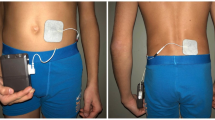Abstract
Internal anal sphincter (IAS) dysfunction is a cause of refractory constipation in children. The goal of this study was to determine whether intrasphincteric injection of botulinum toxin is effective in the treatment of constipation in pediatric patients with IAS dysfunction. A retrospective review was performed of 24 pediatric patients with intractable constipation. All patients had abnormal anorectal manometry, with either elevated IAS resting pressure (≥100 mm Hg) or an absent or diminished rectoanal inhibitory reflex. Patients with Hirschsprung’s disease were excluded. All patients underwent botox injection into the IAS and were followed for a minimum of 6 months. Of 24 patients, 22 experienced significant improvement in their constipation lasting greater than 2 weeks. The duration of effect was variable, with 12 patients demonstrating benefit lasting at least 6 months. Transient postoperative incontinence occurred in five patients. Intrasphincteric injection of botox is a safe and effective treatment for intractable constipation in children with IAS dysfunction.


Similar content being viewed by others
References
De Caluwe D, Yoneda A, Akl U, Puri P (2001) Internal anal sphincter achalasia: outcome after internal sphincter myectomy. J Pediatr Surg 36:736–738
Messineo A, Codrich D, Monai M, Martellossi S, Ventura A (2001) The treatment of internal anal sphincter achalasia with botulinum toxin. Pediatr Surg Int 17:521–523
Minkes RK, Langer JC (2000) A prospective study of botulinum toxin for internal anal sphincter hypertonicity in children with Hirschsprung’s disease. J Pediatr Surg 35:1733–1736
Ciamarra P, Nurko S, Barksdale E, Fishman S, Di Lorenzo C (2003) Internal anal sphincter achalasia in children: clinical characteristics and treatment with Clostridium botulinum toxin. J Pediatr Gastroenterol Nutr 37:315–319
Abbas Banani S, Forootan H (1994) Role of anorectal myectomy after failed endorectal pull-through in Hirschsprung’s disease. J Pediatr Surg 29:1307–1309
Neilson IR, Yazbeck S (1990) Ultrashort Hirschsprung’s disease: myth or reality. J Pediatr Surg 25:1135–1138
Kimura K, Inomata Y, Soper RT (1993) Posterior sagittal rectal myectomy for persistent rectal achalasia after the Soave procedure for Hirschsprung’s disease. J Pediatr Surg 28:1200–1201
Simpson LL (1981) The origin, structure, and pharmacological activity of botulinum toxin. Pharmacol Rev 33:155–188
Jones OM, Brading AF, Mortensen NJ (2004) Mechanism of action of botulinum toxin on the internal anal sphincter. Br J Surg 91:224–228
Pasricha PJ, Ravich WJ, Hendrix TR, Sostre S, Jones B, Kalloo AN (1995) Intrasphincteric botulinum toxin for the treatment of achalasia. N Engl J Med 332:774–778
Maria G, Cassetta E, Gui D, Brisinda G, Bentivoglio AR, Albanese A (1998) A comparison of botulinum toxin and saline for the treatment of chronic anal fissure. N Engl J Med 338:217–220
Maria G, Cadeddu F, Brandara F, Marniga G, Brisinda G (2006) Experience with type A botulinum toxin for treatment of outlet-type constipation. Am J Gastroenterol 101:2570–2575
Patti R et al (2006) Botulinum toxin vs. topical glyceryl trinitrate ointment for pain control in patients undergoing hemorrhoidectomy: a randomized trial. Dis Colon Rectum 49:1741–1748
Keshtgar AS, Ward HC, Sanei A, Clayden GS (2007) Botulinum toxin, a new treatment modality for chronic idiopathic constipation in children: long-term follow-up of a double-blind randomized trial. J Pediatr Surg 42:672–680
Rodriguez L, Flores A (2005) Internal anal sphincter achalasia: relationship with colonic dysmotility and manometric response to botulinum toxin injection. J Pediatr Gastroenterol Nutr 41:496
Freeman NV (1984) Intractable constipation in children treated by forceful anal stretch or anorectal myectomy: preliminary communication. J R Soc Med 77(Suppl 3):6–8
Holschneider AM, Shauer A, Meister P (1976) Results of spincteromyotomy in anal-spincter achalasia. Histology and postoperative continence. Chirurg 47:294–300
Heikkinen M, Lindahl H, Rintala RJ (2005) Long-term outcome after internal sphincter myectomy for internal sphincter achalasia. Pediatr Surg Int 21:84–87
Brown SR, Matabudul Y, Shorthouse AJ (2006) A second case of long-term incontinence following botulinum injection for anal fissure. Colorectal Dis 8:452–453
Acknowledgments
We thank Kristin St Pierre, NP and Paula Curren, NP for their expert help in the care of these patients.
Author information
Authors and Affiliations
Corresponding author
Rights and permissions
About this article
Cite this article
Irani, K., Rodriguez, L., Doody, D.P. et al. Botulinum toxin for the treatment of chronic constipation in children with internal anal sphincter dysfunction. Pediatr Surg Int 24, 779–783 (2008). https://doi.org/10.1007/s00383-008-2171-3
Accepted:
Published:
Issue Date:
DOI: https://doi.org/10.1007/s00383-008-2171-3



